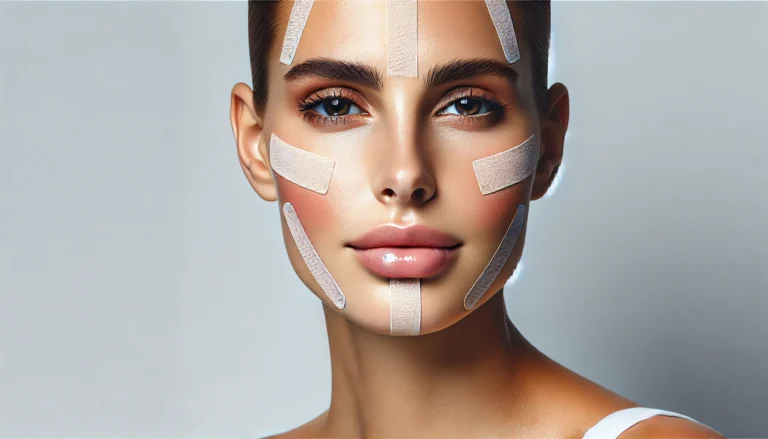
What is face taping? Imagine strapping your skin into a sticky, overnight corset to fight wrinkles—this controversial trend is exploding on TikTok, promising a facelift without surgery. But beneath the viral hype lies a disturbing reality: dermatologists warn that face taping could damage your skin, not save it. From collagen breakdown to allergic reactions, the risks are mounting. Why are millions still gambling their skin health for a temporary fix? Buckle up: we’re dissecting the truth behind this beauty bandwagon—and why your complexion deserves better.
1. Face Taping Exposed: The Deceptive “Miracle” Explained
Face taping involves using adhesive tape—like medical or kinesiology tape—to pull and “hold” sagging skin in place overnight. Proponents claim it smooths wrinkles, lifts cheeks, and even reduces double chins. But here’s the catch: results vanish by morning. While influencers flaunt filtered “after” shots, experts like Dr. Alicia Kim warn, “This is a non-invasive anti-aging gimmick. The tension from tape weakens skin over time, making sagging worse.” Yet, the trend thrives on desperation for quick fixes in a world obsessed with youth.
2. The Dark Side of Face Taping: Why “Non-Invasive” Doesn’t Mean Safe
The appeal of face taping lies in its promise of non-invasive anti-aging—no scalpels, no downtime. But psychology plays a role. “People crave control over aging,” says Dr. Kim. “Tape feels empowering, but it’s a trap.” Studies show short-term tactics often backfire, especially when users ignore skin taping risks like irritation, broken capillaries, and dependency. Worse, repeated adhesive use strips the skin barrier, inviting infections and premature aging. The irony? Chasing youth could accelerate its loss.
3. Face Taping Risks: Dermatologists Sound the Alarm
Before you unroll that tape, consider these skin taping risks:
Inflammation: Adhesives tug at delicate skin, causing redness, rashes, and peeling.
Elasticity Loss: Chronic tension breaks down collagen, the protein that keeps skin firm.
Sleep Sabotage: Tape tugs and itches, disrupting deep sleep—a critical time for skin repair.
“You’re essentially giving yourself a mild injury nightly,” warns Dr. Raj Patel. “Skin needs rest, not restraint.” Even “gentle” tapes can trigger allergic reactions, leaving long-term scars.
4. Face Taping Myths vs. Science: What Actually Works?
Does face taping actually work? Science says no. A 2023 Journal of Dermatology study found zero evidence of long-term benefits. Tape flattens wrinkles temporarily by compressing skin—like pressing a creased shirt. But once removed, gravity wins. “It’s a placebo,” says researcher Dr. Elena Moss. “Real anti-aging requires rebuilding collagen through retinoids or lasers.” Worse, the illusion of results fuels obsessive use, trapping users in a cycle of dependency and damage.
5. Beyond Face Taping: Safer, Smarter Paths to Youthful Skin
Skip the skin taping risks with proven, gentle methods:
Facial Acupressure: Stimulate blood flow and collagen with targeted massage.
Peptide Serums: Boost elasticity without irritating adhesives.
Microcurrent Devices: Tone muscles safely with low-voltage currents.
For stubborn areas, consult a dermatologist about HIFU (High-Intensity Focused Ultrasound), a non-invasive anti-aging treatment with lasting results.
Your Skin Isn’t a DIY Project
Face taping isn’t just ineffective—it’s a hazard masquerading as hope. While the trend preys on fears of aging, true beauty thrives on healthy habits, not sticky shortcuts. Ditch the tape, embrace science-backed care, and let your skin breathe. Remember: Aging is natural, but sabotage isn’t.
